Best Evergreen Trees to Plant in Maryland
Maryland residents should grow an evergreen tree for a variety of reasons. Evergreens have a distinctive attractiveness throughout the year, but their winter foliage shows out against the barren terrain. Most evergreen plants are also hardy and adaptable natives to Maryland, making American arborvitae and loblolly pine excellent choices for vibrant evergreens.
Growing evergreen trees in Maryland is a sure bet if you're a newcomer to planting trees on your property because they are typically a low-maintenance option for the more hands-off MD gardener. No matter what growing zone you are in; these magnificent evergreen trees are the answer if you want to have four distinct seasons of color in your Maryland garden.
9 Evergreen Trees to Grow in Maryland
Evergreens are a terrific addition to your Wild backyard since they maintain their leaves or needles all year round. Along with winter refuge and nesting locations, evergreens offer year- round cover. Additionally, evergreens offer sap, cones, seeds, needles, twigs, and buds all year long, producing a year-round food source. The evergreen trees on the following list are great for wildlife.
1. Eastern Red Cedar
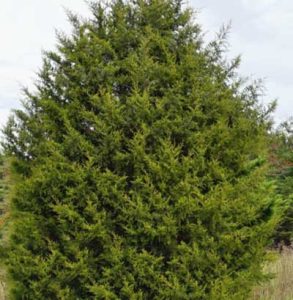
The eastern red cedar, a medium-sized coniferous evergreen that can be found all over North America but is most common in the east, is a tree. Despite its name, the eastern red is a species of the juniper tree and a member of the cypress family, not a cedar tree. These trees are frequently planted as accent or specimen trees, but they are also excellent for use as a windbreak, privacy screen, or shelterbelt when planted in rows. They are also an excellent option for those who enjoy wildlife, as their tiny, blue fruits will draw a variety of birds and small
mammals. Its dark wood has a long history of being used to make fenceposts, furniture, and other things.
Planting eastern red cedars requires well-draining soil that can be dry or moist but not constantly wet. They can be cultivated in either full sun or partial shade, alkaline or acidic soil, or both.
2. Sweetbay Magnolia
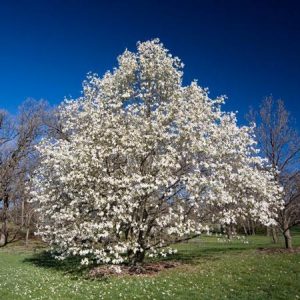
A sweetbay magnolia is an attractive option for the decorative tree for your Maryland environment because of its enormous, fragrant white blossoms and lance-shaped brilliant green foliage. Thanks to its rounded body and thick foliage, it functions well as a shade tree. It requires relatively little maintenance and may be the magnolia family member with the highest pest and disease resistance.
Despite being labeled as an evergreen tree, it is essential to conduct rigorous research because some varieties will turn deciduous the farther north they are planted. Although Santa Rose, Henry Hicks, and other cultivars will be evergreen in some areas of Maryland, Keltyk sweetbay is the best option because it is evergreen through zones 5 to 9.
A pH of acid should be present in the soil where the sweetbay is to be planted. It requires at least six hours of sunlight each day, so plant it in either full sun or partial shade.
3. American Holly
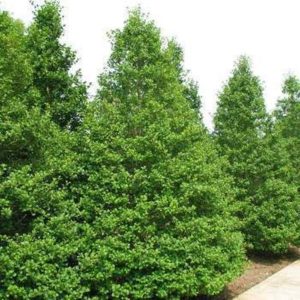
The American holly is the most well-known variety in landscape gardening since most Americans recognize it as a Christmas adornment and symbol. According to the US Forest Service, it boasts the country's whitest timber.
Their colorful berries and glossy, lustrous leaves give excellent visual flair, especially in the winter. These pyramidal evergreens can be planted and pruned into uniform hedges to create good privacy screens, while they also make great specimen plants.
Although the holly tree's berries are incredibly alluring, bear in mind that only birds are supposed to consume them. Be cautious if you have kids or pets in your home because American holly berries are mildly harmful to humans and many animals, including dogs. Grow American holly in full sun or light shade on acidic, well-draining soil. Make sure that each tree is five feet apart if you plant them as a hedge.
4. Eastern Hemlock
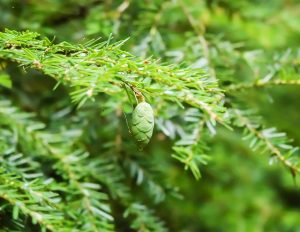
The Eastern Hemlock tree is ideal for gardeners looking for an evergreen that looks beautiful in winter and fits well in the local climate because it is a native tree to Maryland and much of the eastern region of the United States. The bark of this tree has historically had little commercial value, but as recently as the early 20th century, it was used to tan leather.
They are a great choice for specimen planting because of their tall, attractive pyramidal shape, which is neat and consistent all year. Their needles, which are dark green and gray, provide the landscape depth and color.
Eastern hemlock should be planted in acidic soil, moist, loamy, well-draining, and gives partial shade rather than full sunlight. Despite its name, the eastern hemlock is entirely non-toxic and has no connection to the herbaceous poison hemlock plant.
5. Eastern White Pine
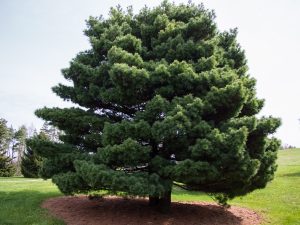
The eastern white pine is a big, challenging, and quick-growing tree that grows wild in many eastern United States areas. Despite having an average height of 80 feet, these trees can live up to 200 years and grow as high as 150 feet. Due to its lightweight wood, the eastern white pine has historically been a significant timber tree in the eastern US.
If gardeners have enough room, these pines are typically planted as specimen trees in landscape gardening. They can be used as hedges but must be clipped frequently to control excessive growth.
These trees should be cultivated in an area with full sun or partial shade in acidic, well-draining soil. The higher your location is in its hardiness range, the more difficulty it will have because they favor cooler climes. Gardeners in MD who live near humid coasts and inlets might consider using a different kind of evergreen.
6. American Arborvitae
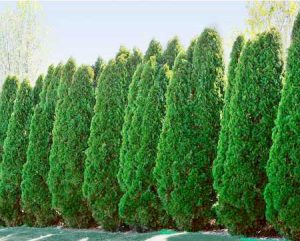
The American arborvitae is a charming ornamental evergreen that you should consider if you're a novice landscape gardener in Maryland. Once established, they require almost minimal upkeep because they are so simple to cultivate.
The name arborvitae, which means "tree of life," refers to this arborvitae historically as a source of lumber and natural medicines. These days, it's most frequently utilized as a specimen plant, a privacy screen, and for hedging.
The pyramidal or circular growth type of these tidy, almost fluffy-appearing arborvitae can be readily pruned to achieve the desired height and shape. They should be cultivated in consistently moist soil, has good drainage, has an alkaline pH, and is either in full sun or light shade.
7. Douglas Fir
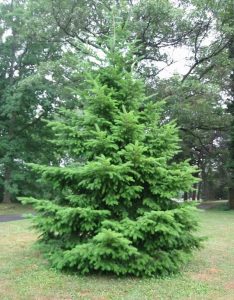
The Douglas fir's name is deceptive because it is not a natural fit, just like the eastern red cedar. Despite this, it remains the most popular "fir" tree for home landscaping and is frequently used as an ornament for Christmas trees.
Despite being able to grow in Maryland, this gorgeous evergreen only does so in areas that are in zones 4, 5, and 6. Examples include the border between Virginia and West Virginia, Allegany County, Garret County, and more. Before buying a Douglas fir, familiarize yourself with the USDA zone where your property is located.
A Douglas fir needs soil that drains appropriately to survive, and it will help if the soil is moist, loamy, and has an acidic pH. This tree will require monthly watering until it is established, and either full or moderate shade would work nicely.
8. Norway Spruce
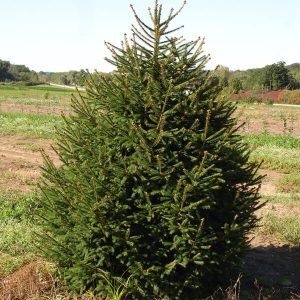
Like its fir and pine tree relatives, the Norway spruce is a popular option for an elegant Christmas tree. But it may offer a refined touch to your MD landscape in addition to looking nice in your living room.
With its pyramidal structure, "weeping" branches, and dark green foliage, it is a stunning tree that thrives, whether grown as an accent or windbreak. Their elaborate seed cones also give a decorative touch.
When selecting a cultivar of Norway pine for your property, thoroughly examine each cultivar's particular requirements and how well they will do on your planting areas.
Prioritize an area for your Norway pine with rich, sandy, moist soil that drains quickly, with a pH that is just slightly acidic. Allow them access at least six hours of sunlight each day in a location with enough room to support their height and root spread.
9. Loblolly Pine
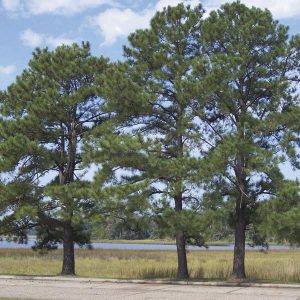
This pine tree has a solid commercial value since it grows quickly and tall. The loblolly pine is the second most widespread tree species in the US and has high commercial potential as a timber tree in the southeast.
The loblolly is frequently used in landscape gardening to create a privacy barrier quickly. Additionally, it requires little maintenance and is adaptable, withstanding heat, drought, and poor soil quality to a lesser extent.
Choose a location with moist, well-draining soil with an acidic pH if you want to grow your loblolly pines in ideal conditions. Regardless of the soil type, sandy, loamy, or clay moisture is required. In general, loblolly trees don't require fertilization or pruning, except for any branches with nutritional deficits or any dead or diseased branches. They like full sun (at least four hours each day).
Conclusion
While starting to grow your evergreen trees in Maryland is simple and accessible, it still takes time and effort. Understanding the requirements and growing circumstances of any evergreen you are considering planting is crucial. For instance, some evergreens, like the sweetbay magnolia, will turn deciduous as the environment warms, so you may need to select particular cultivars to achieve the desired results.
You'll avoid a lot of bother and regret in the long run by carefully considering every aspect of your landscape garden. If you can pull that off, you'll soon have a colorful, lively backyard in Maryland with lots of seasonal charm.

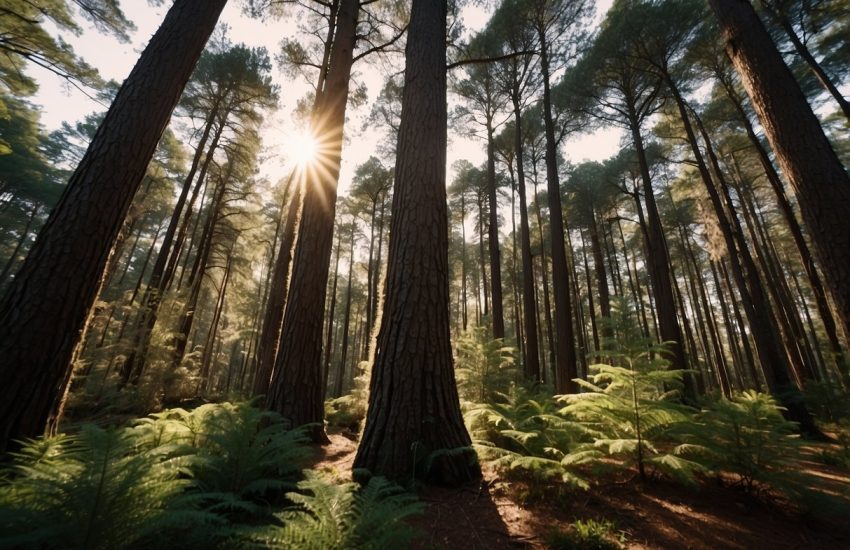
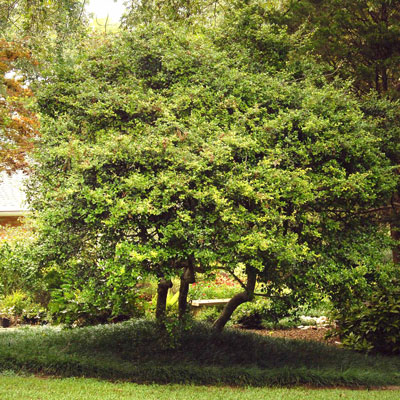
Why would Norway spruce (Picea abies) be suggested for Maryland? This is a European tree. Also the Douglas Fir (Pseudotsuga menziesii) is on the west coast of North America.
The Norway spruce (Picea abies) is indeed a native of Europe, but it has been widely planted in North America, including Maryland. It is a popular choice for ornamental planting because of its pyramidal shape, evergreen needles, and tolerance for a wide range of climates. The Douglas fir (Pseudotsuga menziesii) is also a popular choice for planting in Maryland. Douglas firs prefer cooler climates with more moisture, and they can be susceptible to drought and heat stress.